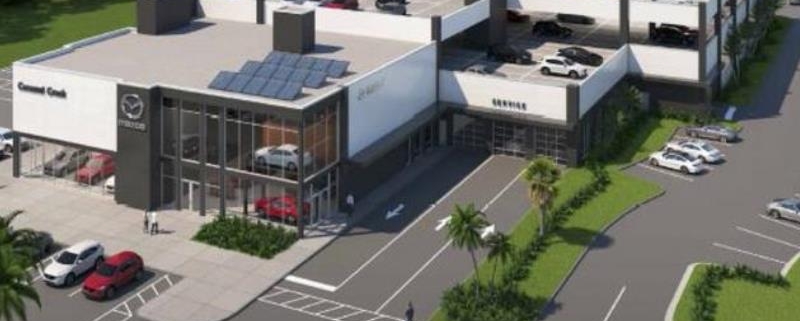The Chinese proverb—“may you live in interesting times” —seems to ring true in today’s financial market. Just ask real estate investors faced with the uncertainty of future Fed monetary policy, the path of inflation, the tough year for equities, and sagging retirement portfolios. The Business Roundtable just reported CEO sentiment is deteriorating, with falling earnings estimates, a shaky housing market, and remaining supply chain issues.
Meanwhile, consumer spending is up, savings are down, and borrowing is growing—even as interest rates are rising.
In a lunchtime capital markets panel at the 2022 ULI Florida Meeting in Miami, top real estate investment leaders shared insights on investing in today’s uncertain environment and more specifically, in Florida. The prevailing takeaway seemed to boil down to an investor’s risk tolerance in uncertain times.
“There are things that we know we don’t know. We know activity has started to slow. The economy has started to slow. But what we don’t know is exactly how all these dynamics will play out,” said Darin Mellott, director of research & analysis for CBRE. “We know the inflation story is global, it’s persistent, and it’s high. There are some glimmers of hope here. It appears to be peaking. The central bank has been hiking at a record pace, not just here in the U.S., but across the globe, and this presents particular challenges for capital intensive industries such as ours.”
In the face of these unknowns, what are investors expecting? Recession or not, we’re in much choppier economic waters today. Real estate can be complicated but at its core, it’s supply and demand, said Jonathan Pollack, Sr., managing director, Blackstone. Even with a focus on migration, job growth and asset classes, the unpredictability of interest rate cycles adds to market nuance.
“If you ask 20 different experts on Wall Street that are in research roles and you get 20 different answers,” he said. “It’s very hard to predict so that means you stay close to home and do things that seem safer and more obvious in a world that could be headed into a recession or more challenging environment.”
Warren de Haan, managing partner and Co-CEO with ACORE Capital, compared this moment to the opening weeks and months of the pandemic. People thought “return to work” and normalcy was around the corner. “We all need hope,” he said.
“I’m not a rocket scientist, but CEOs are going to reduce their consumption. Put those factors together, along with everything else that’s going on, and that leads me to believe I need to be on defense, not offense right now for my portfolio,” he said. “That will play out for us at Acorn in two ways…. getting ahead of the issues, great communication with our borrowers and investors, and secondly, what will happen from that, the opportunistic stuff, special situations, high-yield lending opportunities.”
This “lag effect” is critical, said Lauren Hochfelder, co-CEO and head of Americas for Morgan Stanley Real Estate Investing. Undue optimism related to high retail spending and consumer optimism leaves us “wanting to believe positive things…and easy to be lulled into this belief that it’s all good. The reality is that the impact on the consumer…will push us into a mild recession. Europe will be even more dramatic.
“Once we have more clarity, the markets will recover reasonably quickly, so we need to stay active during this market environment,” she said. “Once we get to a place where these guys get back to lending at an attractive rate and you can adjust your costs of capital back, it’s less interesting.”
Lack of certainty among the Fed is not unreasonable, given they’re dealing with the continued fallout from “one of the largest financial experiments of all time, which was $10 trillion in cash just being given out to the world,” Pollack said. “That just has to filter through somehow. I don’t think anyone can tell you how this plays out.”
Rate hikes and quantitative tightening, as well as increased regulation are putting pressure on the market. Spread conditions in the real estate market in the coming year are equally uncertain given market conditions. Risk versus capital type, in the absence of liquidity, coupled with rate instability, “the big traditional bond buyers are not as active as we want them to be,” de Haan said. “When they become active again, when we achieve some rate stability, even if that rate range is on the higher end, we should see the bond buyers come back in. They’re an important part of the ecosystem, because that will drive spreads down, and the second thing it will do, it will clear off some of the collateral from the bank’s balance sheets into the securities market.”
What will the future hold, once this settles out remains puzzling? Preferred property types, or those considered “lily pads” for safe investments will continue to be industrial, interim housing, self-storage, and life science in the right markets, Pollack said. Hochfelder believes capital will return to retail, somewhat in response to sales, yield premiums and creative financing, as well as those in preferred places.
Some take the view that “whether we’re right or wrong, we want to be leveraged in more secular tailwinds than cyclical ones. Twenty or 30 years ago, 75 percent of institutional real estate was in office and retail, and today, those are dirty words.”
Mellott wondered where there may be cause for concern. De Haan spoke of downsides affecting multifamily, which could face affordability or construction cost issues.
Statewide, Florida has outperformed other markets, from its influx of population and regulatory drivers, and investors have taken note. Asked whether they appreciate one Florida market over another, or if one outpaces the rest, Hochfelder noted that the entire state is enjoying the “demographic tailwinds,” yet Miami’s arrival as a “gateway market” sets it apart. “Some of the other markets referenced are very, very strong secondary markets.”
What should give investors confidence in Florida, from city hall to Tallahassee, is that “politicians are playing to win,” Pollack said. “If you want to be where there’s growth, there’s going to be growth in Florida because they all want the growth and they’re coming after it aggressively.”
De Haan has been asked whether Miami “will get a black eye” from the FTX debacle and crypto fallout. He believes quite the opposite.
“Miami showed everybody that they’re open and intelligent about attracting talent, they are business friendly, the infrastructure is here, and they’re open for business,” said De Haan.
Source: ULI









